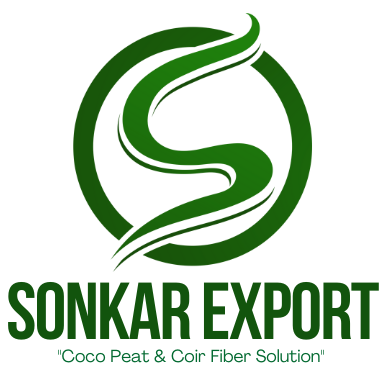
The increasing global demand for sustainable and eco-friendly farming has shifted attention toward natural growing mediums—and coir-based products have emerged as a powerful alternative. Derived from the fibrous husk of coconuts, coir products like coco peat, coir fiber pots, and coir grow bags are being widely used in modern horticulture for their environmental benefits and superior plant performance.
Whether you’re a home gardener, commercial grower, or exporter, understanding the advantages of coir can help you make better cultivation decisions. Below are the top five reasons why coir products are rapidly replacing conventional materials like peat moss, synthetic pots, and plastic liners in horticulture.
🌱 1. Environmentally Sustainable and Renewable
Unlike peat moss, which takes hundreds of years to regenerate and is often harvested from environmentally sensitive wetlands, coir is a renewable resource. It is a byproduct of the coconut industry—specifically the outer husk of coconuts that would otherwise go to waste.
By using coir, farmers and gardeners support:
Waste reduction in the coconut processing industry
Lower carbon footprint as coir does not involve destructive mining
Sustainable farming practices that align with global eco-friendly trends
Moreover, coir is biodegradable, which means it naturally breaks down over time and enriches the soil, unlike synthetic materials that pollute landfills.
💧 2. Excellent Water Retention Capacity
One of the standout properties of coco peat is its ability to retain moisture. Coir can absorb up to 8–10 times its weight in water, making it especially valuable in dry regions or for plants with high water needs.
This water-holding capability leads to:
Reduced frequency of irrigation
Lower water wastage
Improved drought resistance in potted and greenhouse plants
It also provides a buffer, allowing plants to access water even when surface moisture appears low, which helps prevent wilting and improves yield.
🌬️ 3. Promotes Superior Aeration and Root Growth
The fibrous texture of coir allows for excellent aeration, preventing compaction in pots and grow beds. This aerated structure creates space for air to reach plant roots, improving oxygen exchange and encouraging robust root development.
Healthy roots lead to:
Faster plant growth
Stronger stem and foliage
Better nutrient uptake
Reduced risk of root rot
In contrast, traditional soil or peat mediums often become compacted over time, restricting air flow and hindering plant health.
🌡️ 4. Neutral to Slightly Acidic pH for Versatility
Coir naturally has a pH range of 5.5 to 6.8, which is ideal for most horticultural crops. This makes it a suitable growing medium for:
Vegetables (tomatoes, cucumbers, peppers)
Fruits (strawberries, melons)
Ornamentals (roses, orchids, succulents)
Herbs (basil, mint, cilantro)
While soil often needs pH correction using lime or sulfur, coir is generally ready to use, reducing preparation time and cost. Its pH balance also enhances nutrient availability, helping plants absorb essential minerals more efficiently.
🛡️ 5. Natural Resistance to Diseases and Pests
Coco peat is naturally resistant to bacterial and fungal infestations. It contains lignin, a natural compound that supports microbial activity beneficial to plants but inhibits harmful pathogens.
Benefits include:
Fewer soil-borne diseases
Reduced need for chemical pesticides
Healthier root zone environment
Lower maintenance and input costs
Additionally, coir doesn’t attract fungus gnats or root aphids as commonly as other organic substrates, making it safer and cleaner for indoor and greenhouse growing.
🪴 Bonus: Versatility in Growing Formats
Coir is available in a variety of formats to suit every horticultural need:
Compressed bricks or blocks (for potting and hydroponics)
Grow bags (for greenhouse cultivation)
Coir discs and pellets (for seed starting)
Coir pots (biodegradable nursery containers)
Coir mulch mats (for weed control and moisture retention)
This versatility allows growers to tailor coir use to specific crops, climates, and growing systems, from home balconies to industrial farms.
✅ Final Thoughts
The rise of coir in horticulture isn’t just a trend—it’s a solution rooted in sustainability, efficiency, and productivity. By switching to coir products, gardeners and commercial growers can significantly improve plant health, reduce water usage, and promote environmentally responsible practices.
As climate challenges grow and soil quality declines, coir-based growing mediums offer a future-ready path toward cleaner, greener horticulture.
